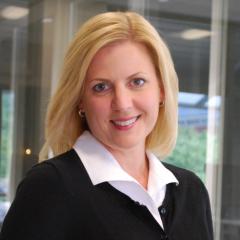 Beth Israel Deaconess Medical Center (BIDMC) has a long tradition of testing speculative technologies with the notion that breakthroughs often require tolerance for failure. For example, we’ve embraced blockchain in healthcare because we believe public ledgers have promise to unify medical records across institutions. Over the past few months, we’ve developed healthcare applications for Alexa, Amazon’s ambient listening device that combines natural language processing and easy to use application program interfaces. We have also tried Google Home. Here’s our experience thus far...
Beth Israel Deaconess Medical Center (BIDMC) has a long tradition of testing speculative technologies with the notion that breakthroughs often require tolerance for failure. For example, we’ve embraced blockchain in healthcare because we believe public ledgers have promise to unify medical records across institutions. Over the past few months, we’ve developed healthcare applications for Alexa, Amazon’s ambient listening device that combines natural language processing and easy to use application program interfaces. We have also tried Google Home. Here’s our experience thus far...
 The Department of Health and Humans Services’ Office of the National Coordinator for Health Information Technology (ONC) today announced the Phase 2 winners of the Move Health Data Forward Challenge. Winning submissions will now move on to the challenge’s last phase to develop applications that will allow individuals to share their personal health information safely and securely with their health care providers, family members or other caregivers...
The Department of Health and Humans Services’ Office of the National Coordinator for Health Information Technology (ONC) today announced the Phase 2 winners of the Move Health Data Forward Challenge. Winning submissions will now move on to the challenge’s last phase to develop applications that will allow individuals to share their personal health information safely and securely with their health care providers, family members or other caregivers...
 careMESH is the only service on the market that guarantees 100% digital delivery of patient health information to any clinician nationwide so that healthcare providers and their support teams can communicate and collaborate with each other…instantly. Our secure services, hosted on the Google Cloud Platform© and inclusive of our proprietary FHIR-based National Clinician Directory, make it possible for clinicians and their support teams to locate each other and share digital patient health information, without the burden and expense of complex integration projects.
careMESH is the only service on the market that guarantees 100% digital delivery of patient health information to any clinician nationwide so that healthcare providers and their support teams can communicate and collaborate with each other…instantly. Our secure services, hosted on the Google Cloud Platform© and inclusive of our proprietary FHIR-based National Clinician Directory, make it possible for clinicians and their support teams to locate each other and share digital patient health information, without the burden and expense of complex integration projects. 
 Catherine Thomas is Co-Founder & VP of Customer Engagement for careMESH, and a seasoned marketing executive with extensive experience in healthcare, telecommunications, and the Federal Government sectors. As co-founder of careMESH, she brings a nearly 25-year track record in Strategic Marketing and Execution; Branding & Corporate Positioning; Analyst & Media Relations; Sales Channel Strategy & Support; Social Media Programs; and Staff & Project Leadership.
Catherine Thomas is Co-Founder & VP of Customer Engagement for careMESH, and a seasoned marketing executive with extensive experience in healthcare, telecommunications, and the Federal Government sectors. As co-founder of careMESH, she brings a nearly 25-year track record in Strategic Marketing and Execution; Branding & Corporate Positioning; Analyst & Media Relations; Sales Channel Strategy & Support; Social Media Programs; and Staff & Project Leadership. Precision medicine promises to revolutionize healthcare: to improve diagnosis, to target treatment, and to deliver better care. Living up to that promise requires collaboration and analysis of large amounts of complex data from many sources, privately and securely. Cloudera, the global provider of the fastest, easiest, and most secure data management and analytics platform built on Apache Hadoop and the latest open source technologies, today announced it will support President Barack Obama’s Precision Medicine Initiative (PMI) by providing training and software, and will collaborate with academic and government research institutions doing non-commercial work on the use of data and analytics for healthcare.
Precision medicine promises to revolutionize healthcare: to improve diagnosis, to target treatment, and to deliver better care. Living up to that promise requires collaboration and analysis of large amounts of complex data from many sources, privately and securely. Cloudera, the global provider of the fastest, easiest, and most secure data management and analytics platform built on Apache Hadoop and the latest open source technologies, today announced it will support President Barack Obama’s Precision Medicine Initiative (PMI) by providing training and software, and will collaborate with academic and government research institutions doing non-commercial work on the use of data and analytics for healthcare. 
 As of April 5, 2021, the U.S. ONC Cures Act Final Rule Compliance Timeframe is in effect. Healthcare providers, Health IT developers, Health Information Exchanges (HIEs), and Health Information Networks (HINs) will have until October 6, 2022, to provide patients with access to all their Electronic Health Information (EHI). There are several requirements that providers, developers, and exchanges must adhere to. Among them are Conditions and Maintenance of Certification requirements for Information Blocking, Communications, and Application Programming Interfaces (APIs). To help you navigate this compliance timeframe, we've asked our J P System's HL7 FHIR® expert, Jay Lyle, what does one need to know about APIs and data standards. Jay has been co-chair of the HL7 Patient Care Work Group for 8 years and is an expert in HL7 data standards development and APIs.
As of April 5, 2021, the U.S. ONC Cures Act Final Rule Compliance Timeframe is in effect. Healthcare providers, Health IT developers, Health Information Exchanges (HIEs), and Health Information Networks (HINs) will have until October 6, 2022, to provide patients with access to all their Electronic Health Information (EHI). There are several requirements that providers, developers, and exchanges must adhere to. Among them are Conditions and Maintenance of Certification requirements for Information Blocking, Communications, and Application Programming Interfaces (APIs). To help you navigate this compliance timeframe, we've asked our J P System's HL7 FHIR® expert, Jay Lyle, what does one need to know about APIs and data standards. Jay has been co-chair of the HL7 Patient Care Work Group for 8 years and is an expert in HL7 data standards development and APIs. Being the lead developer of OpenEMR, the world’s most widely deployed open source electronic medical record (EMR) system, I field calls on a daily basis from people who want to implement it. As part of the due diligence to discover and deliver the best possible outcome for the client, we give them a set of different implementation options that they can consider. The options range from a basic OpenEMR implementation at their offices, to a far more advanced and feature-packed “cloud” solution called BlueEHS.
Being the lead developer of OpenEMR, the world’s most widely deployed open source electronic medical record (EMR) system, I field calls on a daily basis from people who want to implement it. As part of the due diligence to discover and deliver the best possible outcome for the client, we give them a set of different implementation options that they can consider. The options range from a basic OpenEMR implementation at their offices, to a far more advanced and feature-packed “cloud” solution called BlueEHS. j2 Cloud Services™, a world-leading provider of digital cloud fax solutions, will showcase its portfolio of "interoperable" secure cloud fax solutions, including eFax Corporate, Sfax and MyFax, at the 2019 Healthcare Information and Management Systems Society (HIMSS) Annual Conference & Exhibition. As a HIMSS Emerald member, eFax Corporate's presence at HIMSS is slated to be one of its strongest ever! The j2 Cloud Services portfolio of all-digital cloud fax solutions, including eFax Corporate, Sfax and MyFax, replaces the need for antiquated analog fax machines and paper-based faxing with an online document transfer service that is both secure and HIPAA compliant.
j2 Cloud Services™, a world-leading provider of digital cloud fax solutions, will showcase its portfolio of "interoperable" secure cloud fax solutions, including eFax Corporate, Sfax and MyFax, at the 2019 Healthcare Information and Management Systems Society (HIMSS) Annual Conference & Exhibition. As a HIMSS Emerald member, eFax Corporate's presence at HIMSS is slated to be one of its strongest ever! The j2 Cloud Services portfolio of all-digital cloud fax solutions, including eFax Corporate, Sfax and MyFax, replaces the need for antiquated analog fax machines and paper-based faxing with an online document transfer service that is both secure and HIPAA compliant.
 Healthcare is experiencing a revolution. In a tightly regulated and ancient industry, the use of free and open source software makes it uniquely positioned to see a great deal of progress. I work at a scrappy healthcare startup where cost savings are a top priority. Our primary challenge is how to safely and efficiently manage personally identifying information (PII), like names, addresses, insurance information, etc., and personal health information (PHI), like the reason for a recent clinical visit, under the regulations of the Health Insurance Portability and Accountability Act of 1996, HIPAA, which became mandatory in the United States in 2003.
Healthcare is experiencing a revolution. In a tightly regulated and ancient industry, the use of free and open source software makes it uniquely positioned to see a great deal of progress. I work at a scrappy healthcare startup where cost savings are a top priority. Our primary challenge is how to safely and efficiently manage personally identifying information (PII), like names, addresses, insurance information, etc., and personal health information (PHI), like the reason for a recent clinical visit, under the regulations of the Health Insurance Portability and Accountability Act of 1996, HIPAA, which became mandatory in the United States in 2003. OpenEMR, the most popular open-source electronic health record and medical practice management solution, now offers a full panel of easy to install packages on Amazon's Cloud Services. In 2017, OpenEMR released its first Amazon Cloud Services offering, OpenEMR Cloud Full Stack, with the goal of enabling Enterprise use of OpenEMR. However many clinics and academic settings did not require the complexities of a large-scale full cloud offering and/or HIPAA eligibility. The OpenEMR community realized that a one size fits all Amazon cloud service approach could not address the vast range of different requirements and workflows in modern-day clinical and academic settings.
OpenEMR, the most popular open-source electronic health record and medical practice management solution, now offers a full panel of easy to install packages on Amazon's Cloud Services. In 2017, OpenEMR released its first Amazon Cloud Services offering, OpenEMR Cloud Full Stack, with the goal of enabling Enterprise use of OpenEMR. However many clinics and academic settings did not require the complexities of a large-scale full cloud offering and/or HIPAA eligibility. The OpenEMR community realized that a one size fits all Amazon cloud service approach could not address the vast range of different requirements and workflows in modern-day clinical and academic settings.